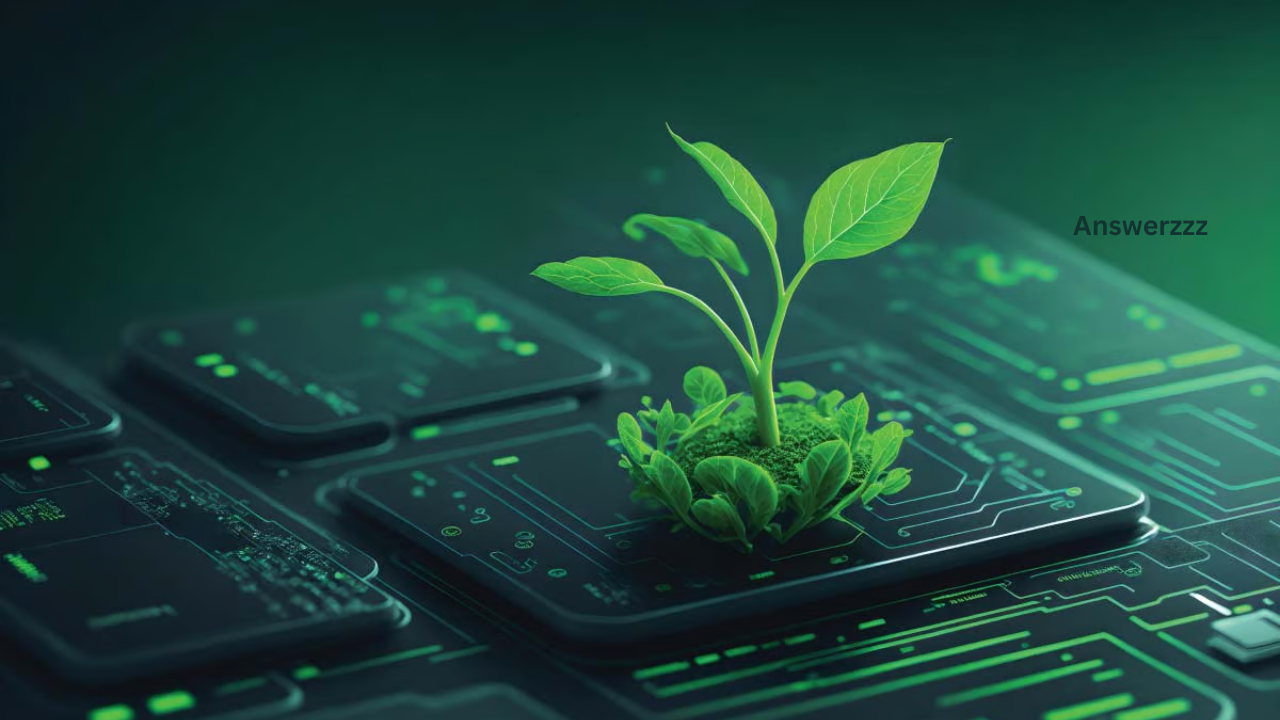The world is facing numerous environmental challenges, including climate change, resource depletion, and pollution. In response, industries across the globe are increasingly turning to sustainable technologies to help mitigate these issues. From renewable energy solutions to eco-friendly manufacturing processes, the tech industry is at the forefront of these green innovations. Sustainable tech, which focuses on minimizing environmental impact while supporting economic growth and societal needs, is reshaping how businesses operate and how people interact with technology. In this article, we will explore the latest innovations in sustainable tech and how they are transforming industries for a greener, more sustainable future.

The Rise of Renewable Energy Technologies
One of the most prominent ways that technology is contributing to sustainability is through the advancement of renewable energy sources. As the demand for electricity increases worldwide, traditional fossil fuels—coal, oil, and natural gas—remain the dominant energy sources. However, these energy sources are major contributors to carbon emissions, air pollution, and climate change. To combat these issues, tech companies are heavily investing in renewable energy technologies, such as solar, wind, hydro, and geothermal energy.
Solar energy has seen a remarkable increase in efficiency and affordability in recent years. Solar panels, which were once prohibitively expensive, are now becoming accessible to both individual consumers and large-scale energy providers. Innovations in solar panel design, such as the development of bifacial solar panels, which capture sunlight from both sides of the panel, have increased energy output without increasing space requirements. In addition, perovskite solar cells—an emerging technology that offers a more affordable and efficient alternative to traditional silicon solar cells—are on the brink of widespread commercial application.
Wind energy, too, has undergone significant advancements. Offshore wind farms, which harness wind energy from the ocean, are becoming increasingly popular as they offer higher and more consistent wind speeds compared to onshore wind farms. Offshore turbines are being developed to be more robust and efficient, and floating wind turbines—designed to operate in deeper waters—are pushing the boundaries of what is possible with wind energy.
Cloud Gaming in 2025: Is It Finally Ready to Replace Traditional Consoles?
Another exciting development is in energy storage. One of the challenges of renewable energy sources like solar and wind is that they are intermittent, meaning they don’t generate power consistently. To solve this problem, energy storage solutions like advanced batteries are being improved. Lithium-ion batteries, which are already widely used in electric vehicles (EVs) and consumer electronics, are becoming more efficient and cost-effective. New types of batteries, such as solid-state batteries and flow batteries, promise even greater energy storage capacities and faster charging times.
Green Manufacturing and Circular Economy
Sustainable tech is not limited to energy production. Green manufacturing practices are revolutionizing industries by reducing waste, improving energy efficiency, and minimizing environmental impacts. The concept of a circular economy, which aims to create a closed-loop system where products are reused, repaired, refurbished, and recycled, is gaining traction in the tech industry.
The electronics industry, for example, has long been a major contributor to e-waste, with millions of tons of discarded gadgets entering landfills each year. However, innovations are helping reduce this waste. Companies are now designing products with longevity in mind, making it easier to repair and upgrade devices instead of throwing them away. Modular phones, for instance, allow consumers to swap out parts like the battery, camera, or screen, reducing the need for a complete device replacement. Similarly, several tech companies are now focusing on using recycled materials in their products, such as recycled aluminium and plastics, to lessen the environmental impact of manufacturing processes.
In addition to product design, green manufacturing methods aim to reduce the energy consumption and carbon emissions associated with production. For example, additive manufacturing, or 3D printing, is a more energy-efficient way of producing goods compared to traditional subtractive methods. With 3D printing, material is added layer by layer, resulting in less waste and lower energy requirements. Furthermore, some 3D printing techniques use recycled plastics and other sustainable materials, contributing to the circular economy.
Sustainable packaging is another significant area of innovation within green manufacturing. As e-commerce continues to rise, the environmental impact of packaging waste becomes a growing concern. Tech companies are exploring alternatives to plastic packaging, including biodegradable and compostable materials, as well as designs that minimize packaging size and material use. For instance, Apple has been making efforts to reduce the carbon footprint of its packaging by eliminating plastic in favour of paper products sourced from sustainable forests.

The Rise of Electric Vehicles and Sustainable Transportation
Transportation is a major source of carbon emissions, and one of the most promising sustainable tech innovations is the rise of electric vehicles (EVs). EVs are rapidly gaining popularity as consumers and governments alike recognize their potential to reduce greenhouse gas emissions and improve air quality. EVs are powered by electricity stored in rechargeable batteries, eliminating the need for fossil fuels like gasoline and diesel.
The evolution of electric vehicles has been driven by several key innovations. For one, battery technology has made significant strides in recent years, leading to longer ranges and shorter charging times. While early EVs were often limited to driving ranges of just 100 miles or less, modern EVs can now travel upwards of 300 miles on a single charge, making them more practical for everyday use. Fast-charging infrastructure has also expanded, allowing drivers to recharge their vehicles in a matter of minutes rather than hours.
Automakers are not just focusing on passenger EVs. Electric buses, trucks, and even delivery vans are beginning to take over urban transportation networks. These vehicles are crucial in reducing emissions from public transport and logistics fleets, which are often major contributors to air pollution in cities. In addition, many cities are investing in electric bike-sharing programs, further promoting sustainable transportation options.
The Rise of Mini PCs: Why Compact Computers are Gaining Popularity in 2024
The integration of renewable energy into EV charging networks is another exciting development in the sector. Many EV owners are now able to charge their vehicles using solar or wind energy, making the entire process of driving an electric vehicle even more environmentally friendly. In the future, we may even see electric roads that can charge vehicles as they drive, further eliminating the need for charging stations.
Sustainable Smart Cities
Sustainability in technology is also playing a crucial role in the development of smart cities—urban areas that use digital technologies to enhance the quality of life for residents while minimizing environmental impact. Smart cities leverage data from sensors, IoT devices, and AI to optimize energy use, transportation, waste management, and more.
For example, smart grids allow cities to more efficiently distribute electricity, balancing supply and demand and integrating renewable energy sources like solar and wind. These grids can detect outages and quickly re-route power to affected areas, reducing downtime and preventing energy waste. Similarly, smart buildings equipped with IoT sensors can automatically adjust lighting, heating, and cooling systems to maximize energy efficiency, reducing the overall energy consumption of the building.
Waste management is another area where technology is making cities more sustainable. Smart waste bins equipped with sensors can monitor waste levels and optimize collection routes, reducing fuel consumption and ensuring that trash is collected efficiently. Additionally, waste-to-energy technologies are being used to turn organic waste into biogas, which can then be used to generate electricity or heat.
In terms of transportation, smart cities are adopting intelligent traffic management systems that use real-time data to reduce congestion, improve traffic flow, and reduce emissions. These systems can dynamically adjust traffic lights based on the flow of traffic, prioritize public transit, and encourage the use of sustainable modes of transportation like biking and walking.
The Role of AI and Big Data in Sustainability
Artificial intelligence (AI) and big data analytics are increasingly being used to tackle some of the most pressing environmental challenges. These technologies can process vast amounts of data to optimize processes, predict outcomes, and make informed decisions that help conserve resources and reduce emissions.
For example, AI is being used in agriculture to optimize water usage, improve crop yields, and reduce the environmental impact of farming. Precision agriculture, which relies on data from sensors, drones, and satellites, allows farmers to apply water, fertilizers, and pesticides only where and when they are needed, reducing waste and minimizing chemical runoff into the environment.
In the energy sector, AI is being used to predict energy demand, optimize supply chains, and manage the integration of renewable energy sources into grids. By analyzing historical data and real-time inputs, AI can forecast power consumption and determine the most efficient way to distribute energy. This helps reduce energy waste and ensures that renewable energy is used effectively.
Sustainable technology is transforming industries across the globe, offering innovative solutions to some of the most critical environmental challenges we face today. From renewable energy innovations to green manufacturing processes and sustainable transportation, the tech industry is increasingly focused on minimizing its environmental impact while maximizing efficiency and economic growth. As technology continues to evolve, it holds the promise of a greener, more sustainable future—one where economic prosperity and environmental responsibility go hand in hand. By embracing these innovations, industries, governments, and individuals can play a pivotal role in addressing the climate crisis and creating a sustainable world for future generations.
AI Assistants: How ChatGPT and Bard are Transforming Everyday Life




